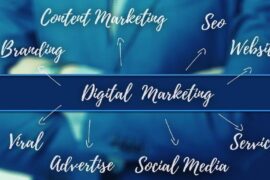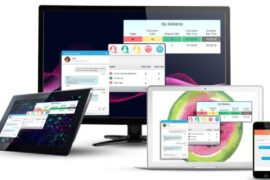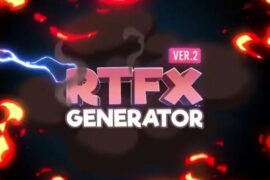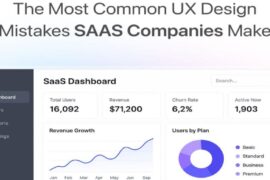In the ever-evolving world of design, choosing the right tools is crucial for both beginners and professionals alike. Whether you are a graphic designer, web developer, UX/UI expert, or an illustrator, the right tools can significantly enhance your workflow, creativity, and productivity. As we move into 2024, the design industry continues to evolve with new features, integrations, and user experiences.
This article will explore some of the best design tools available today, categorized by their specific use cases. These tools cover everything from graphic design to web development, digital illustration, UX/UI design, and collaborative platforms. Let’s dive into the world of design tools and discover what works best for your needs.
1. Adobe Creative Cloud
Overview
Adobe Creative Cloud is the gold standard in the design industry. It provides access to a suite of design tools used by professionals in almost every creative field. Whether you’re designing graphics, editing photos, creating videos, or even working on web and app interfaces, Adobe Creative Cloud offers a tool for every need.
Key Tools:
- Photoshop: The go-to photo-editing software, Photoshop is widely used for tasks like photo manipulation, graphic design, and digital painting.
- Illustrator: Illustrator is essential for vector-based design, logo creation, and illustrations.
- InDesign: This tool is ideal for page layout design, whether it’s for print or digital publications.
- XD: Adobe XD is a powerful tool for UX/UI design, offering features for wireframing, prototyping, and user testing.
Why It’s Great:
- Industry Standard: Adobe is trusted by professionals across the globe.
- Cross-Platform Compatibility: Creative Cloud tools are available on both Windows and macOS.
- Extensive Features: With continuous updates, Adobe’s suite keeps getting more advanced.
Price:
Adobe Creative Cloud operates on a subscription model, with various pricing tiers depending on the specific tools or suite you choose. It may be on the pricier side, but the value it offers is unparalleled for professional designers.
2. Figma
Overview
Figma is one of the leading design tools for UX/UI design, rapidly gaining popularity over the past few years. Unlike traditional design tools, Figma operates fully in the cloud, enabling real-time collaboration between team members across different locations.
Key Features:
- Real-Time Collaboration: Multiple designers can work on the same file simultaneously, making it easy for teams to collaborate.
- Prototyping: Figma allows you to create interactive prototypes directly in the same platform.
- Plugins: With numerous plugins available, Figma offers functionality for everything from icon libraries to accessibility tools.
- Cross-Platform: It works on both macOS and Windows via web browsers, making it highly versatile.
Why It’s Great:
- Cloud-Based: No need for constant updates or managing versions — everything is always up-to-date.
- Collaborative Features: Figma’s collaboration tools make it ideal for teams, especially those working remotely.
- Ease of Use: Figma is highly intuitive, with a clean, user-friendly interface.
Price:
Figma offers a free plan with limited features, with paid plans starting at $12 per month for the professional version.
3. Sketch
Overview
Sketch has long been a favorite among UX/UI designers, especially for web and mobile app design. With its focus on vector-based designs, Sketch is an intuitive tool for creating high-fidelity wireframes, prototypes, and design systems.
Key Features:
- Symbols and Reusable Components: Sketch allows you to create reusable elements such as buttons or icons, helping you maintain consistency throughout the design.
- Artboards: You can create multiple artboards for designing different screen sizes or device interfaces, perfect for responsive design.
- Plugins: There is a vast array of plugins available that extend Sketch’s functionality.
Why It’s Great:
- Intuitive Interface: Sketch is known for its user-friendly design and simple layout.
- Vector Editing: The software’s vector-based editing tools allow for scalable designs.
- Design Systems: Sketch makes it easy to build and maintain a design system for large-scale projects.
Price:
Sketch is available for a one-time fee of $99 for a year of updates, which can be renewed annually.
4. Canva
Overview
Canva has democratized design, offering tools that make it easy for beginners to create professional-looking designs. While it may not have the complexity of software like Photoshop or Illustrator, Canva is a fantastic choice for non-designers and small businesses that need to create graphics quickly.
Key Features:
- Templates: Canva offers thousands of templates for social media posts, posters, flyers, presentations, and more.
- Drag-and-Drop Interface: It is extremely user-friendly, making design accessible for everyone, even with no prior design experience.
- Collaboration: Teams can collaborate on designs in real-time.
- Branding: Canva allows users to upload logos, fonts, and color palettes, making it easy to create branded designs.
Why It’s Great:
- Ease of Use: Canva is incredibly intuitive and simple, which is perfect for beginners.
- Free Plan: Canva’s free version offers a wealth of features, with premium options available for more advanced tools.
- Speed: For quick design tasks like social media graphics, Canva is the best choice.
Price:
Canva offers a free version, with a paid version (Canva Pro) starting at $12.99 per month.
5. Procreate
Overview
Procreate is one of the most popular digital painting tools, especially among illustrators and artists. Exclusively available on iOS, it offers a powerful yet accessible platform for creating intricate drawings, sketches, and digital art.
Key Features:
- Brush Library: Procreate offers a massive collection of brushes, and you can even create your own.
- High-Resolution Canvases: It supports large, high-resolution canvases perfect for detailed artwork.
- Animation: Procreate includes features for basic animation, making it versatile for both static and moving artwork.
- Touch Controls: The iPad’s touch interface offers an incredibly intuitive way to draw and paint.
Why It’s Great:
- Affordability: Procreate is available for a one-time purchase of $9.99, making it one of the most affordable professional-grade design tools.
- Portability: Being an iOS-exclusive app, you can take it anywhere, making it perfect for on-the-go artists.
- Drawing Focus: It’s optimized for digital illustration, offering everything artists need.
Price:
A one-time payment of $9.99, with no subscription fees.
6. Affinity Designer
Overview
Affinity Designer is a vector graphic design software that offers many of the features seen in Illustrator, but at a fraction of the price. It’s a powerful tool used for designing logos, icons, illustrations, and other vector-based artwork.
Key Features:
- Vector and Raster Design: Affinity Designer allows you to work with both vector and raster elements within the same project.
- Precision Tools: It offers a variety of tools to adjust curves, shapes, and lines with pixel-perfect precision.
- One-Time Purchase: Unlike Adobe’s subscription model, Affinity Designer offers a one-time purchase price.
Why It’s Great:
- Affordability: A one-time purchase of around $55 makes it a great alternative to more expensive software like Illustrator.
- Cross-Platform: Available for both macOS and Windows.
- Professional-Grade Features: Affinity Designer offers robust features for vector-based design.
Price:
$54.99 for a one-time purchase with no subscription model.
7. InVision
Overview
InVision is an all-in-one design platform that focuses on prototyping, collaboration, and design workflow. It’s especially popular for its prototyping tools, which help designers create interactive experiences for web and mobile applications.
Key Features:
- Prototyping: Create high-fidelity, interactive prototypes that simulate real user interactions.
- Collaboration: InVision allows for team collaboration, enabling feedback and comments directly on the design files.
- Design Handoff: InVision makes it easy to share designs with developers by providing design specs, assets, and code snippets.
Why It’s Great:
- Prototyping: InVision’s prototyping capabilities are second to none, especially for web and mobile designs.
- Collaboration: InVision fosters communication among teams, keeping everything centralized and organized.
- Design Handoff: It simplifies the handoff process between designers and developers.
Price:
InVision offers a free plan for individuals, with paid plans starting at $7.95 per month.
8. Blender
Overview
Blender is a free, open-source 3D creation suite, widely used for modeling, animation, rendering, and more. While it’s primarily known for 3D design, Blender is increasingly used in game design, animation, and even virtual reality experiences.
Key Features:
- 3D Modeling: Blender provides a comprehensive suite for modeling, sculpting, and texturing 3D objects.
- Animation: It features a full-fledged animation suite, including rigging, physics simulations, and camera tracking.
- Rendering: Blender includes powerful rendering engines like Eevee and Cycles for photorealistic imagery.
- Add-Ons and Extensions: Blender’s open-source nature allows users to extend its capabilities with various plugins.
Why It’s Great:
- Free: Blender is completely free to use, making it one of the best tools for 3D design without the financial burden.
- Community Support: The Blender community is incredibly active, providing a wealth of tutorials, resources, and plugins.
- All-in-One: Blender covers everything from modeling and animation to rendering and video editing.
Price:
Free.
Conclusion
Choosing the best design tools for your needs ultimately depends on the type of design work you do, your workflow, and budget. Tools like Adobe Creative Cloud, Figma, and Sketch are highly regarded for their functionality and collaboration capabilities. Canva and Procreate are great for those who need easy-to-use tools for non-professional design tasks, while Affinity Designer provides an affordable alternative to Illustrator.
For 3D designers and animators, Blender offers powerful features at no cost. Finally, tools like InVision and Affinity Designer are must-haves for those working on UX/UI design and vector-based design.
By integrating the right tools into your creative process, you’ll unlock your potential and produce stunning, innovative designs in 2024 and beyond. Whether you are a beginner or a seasoned professional, the tools available today make it easier than ever to bring your creative ideas to life.































